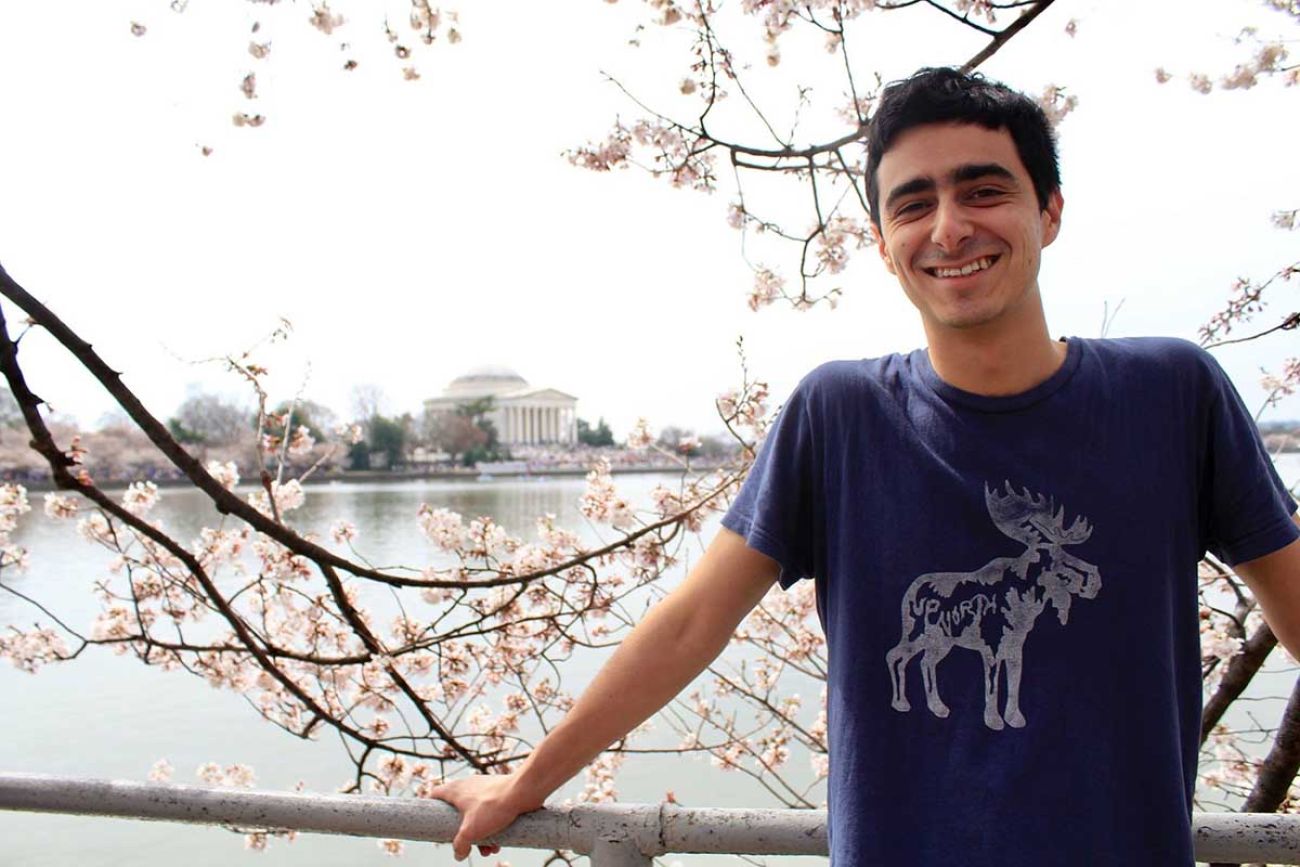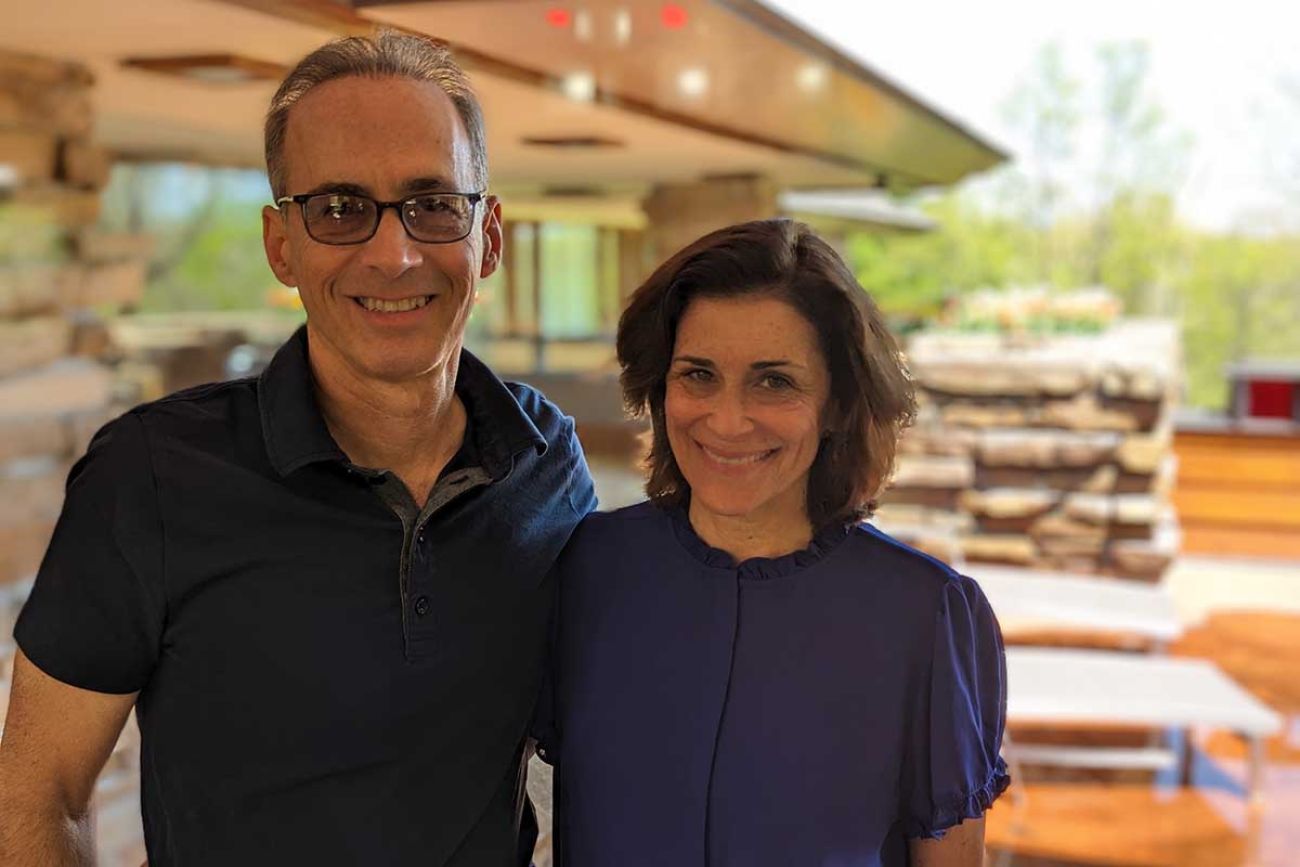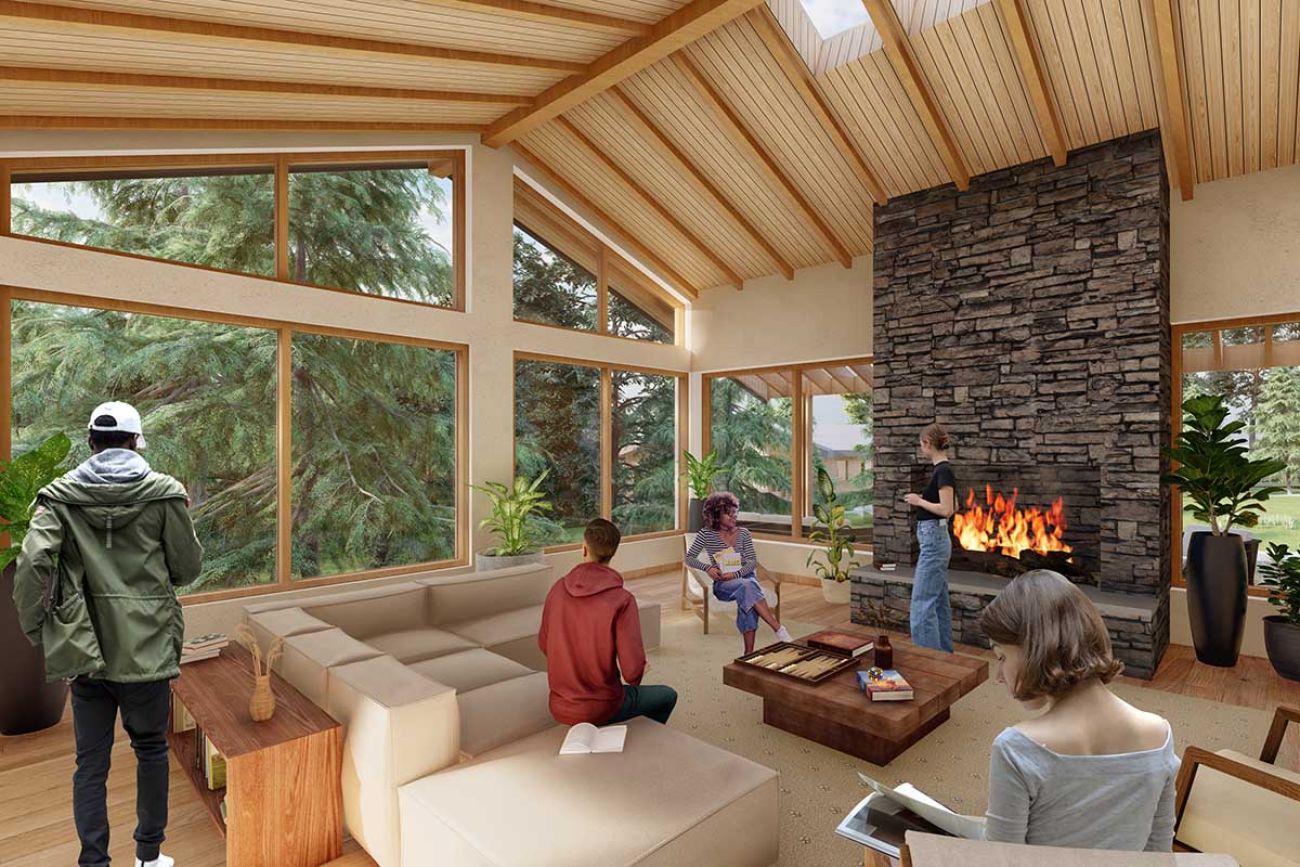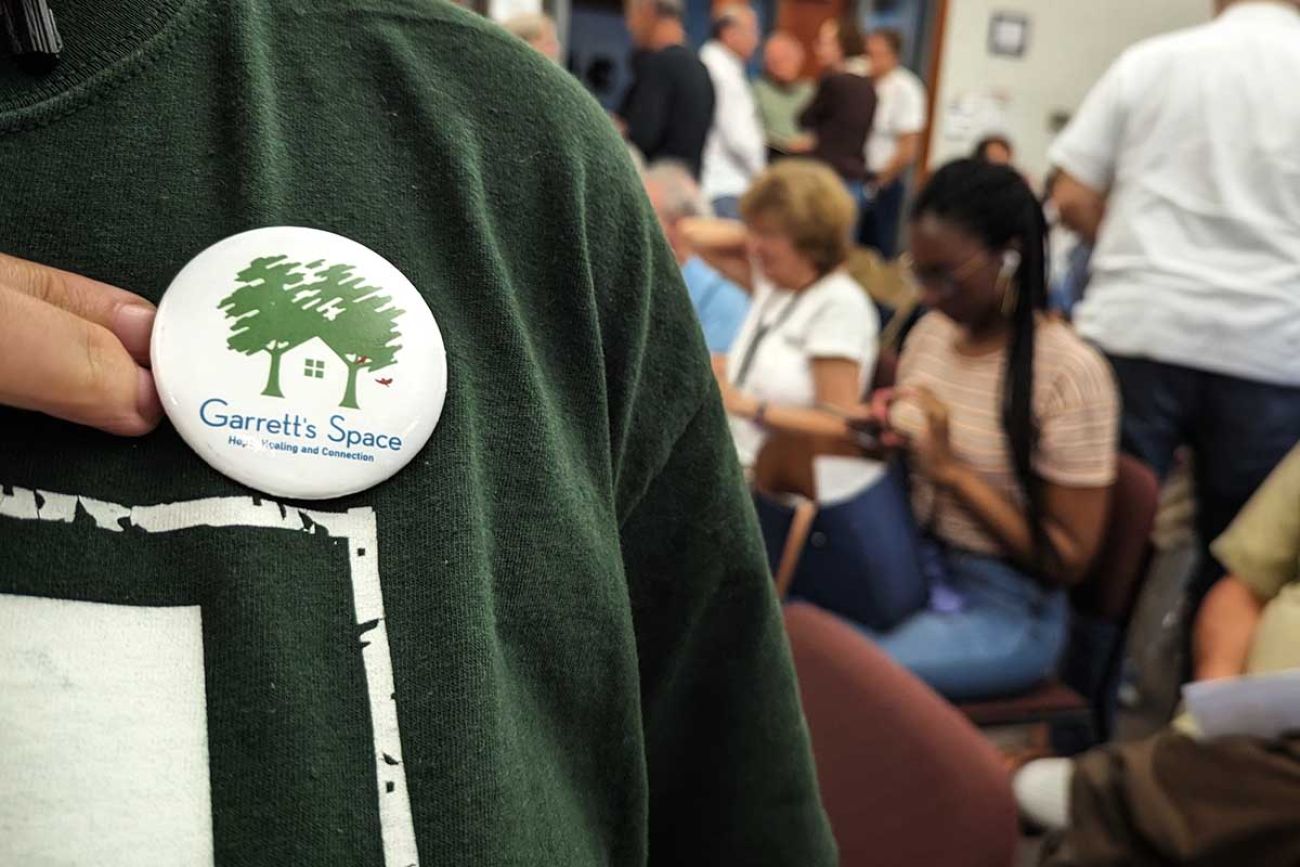After battle, retreat for young people mulling suicide OK’d near Ann Arbor

- Parents of a young man who died by suicide fought to open a suicide prevention center in a wooded retreat near Ann Arbor
- Some neighbors objected, saying it didn’t fit into Superior Township’s master plan
- Trustees approved the plan late Monday. The center will serve people ages 18-28 struggling with thoughts of suicide
SUPERIOR TOWNSHIP —A first-of-its-kind center for young adults who are struggling with suicidal thoughts, nestled among more than 75 acres of wooded land near Ann Arbor, is now a large step closer to reality.
After more than a half-dozen packed meetings, hundreds of emails and letters in support and opposition, and amid lingering threats of a lawsuit, Superior Township trustees voted 5-2 late Monday to approve the suicide prevention center.
Garrett’s Space, will be named after Garrett Halpert, a tennis standout and amateur musician who died by suicide in 2017, the year after graduating from the University of Michigan. The campus will feature a residential center, studio space, and areas for day programming on what is now a $4.8 million, 32-room private residence.
Related:
- New psychiatric unit in northern Michigan to address severe care gap
- As child mental health rates rise, Michigan sharply cuts residential beds
- Mental health crisis: Children at breaking point during COVID
Halpert, 23, found peace in nature, said his parents, Scott and Julie Halpert. Now, they want to offer open spaces to other young people in crises. That means dispensing with the cold, sterile environment of many psychiatric facilities; offering instead clinically guided individual therapy in a soothing setting that also includes yoga, meditation and other activities of well-being.
The center has faced steady opposition from some neighbors in this sylvan community dotted with large homes and converted farmland east of Ann Arbor. Some argued that approving the project would open the door to more development; while others say they are uneasy with the prospect of young people in mental health crises entering and leaving the center.
Since 2021, Garrett’s Space has offered online and occasional in-person group therapy for young people. The Halperts want to expand the nonprofit to residential treatment — a hope seeded with a $4 million federal grant.
The Halperts said their son had sought weekly therapy, but, as Bridge Michigan has previously reported, the options for young people in more acute mental health crises in Michigan are inadequate.
Often they are sent to emergency rooms, where staff may be able to protect them from immediate harm, but are ill-equipped to address long-term mental health needs. Even after being stabilized, countless young people languish at hospitals as they await too-few residential treatment options in the state. In some cases, the only option is a day’s drive away.
The residential facilities that are available are often designed for broader mental health needs, rather than the targeted needs of a suicidal young person, the Halperts told Bridge earlier this summer, as they toured the sprawling home.
[Disclosure: The Halperts' daughter (and Garrett's sister) is Madeline Halpert, worked as a reporter under contract for Bridge Michigan for several weeks in 2020 and early 2021.]
Outside, a late-spring cacophony of swallows and red winged blackbirds subdued the hum of a very distant traffic. Inside, the expansive windows of the Frank Lloyd Wright-inspired design seemed to open seamlessly to trees and grasses and wildflowers.

The Halperts stood inside a sun-warmed room off the kitchen, noting the home’s cubby-like spaces, where young people can meet with the dual purpose of privacy and connection.
In comparison, emergency rooms and large institutions can be “traumatic. They're not the type of safe space that (young people) need,” said Scott Halpert, whose son had gone to emergency rooms for help.
In addition to their own experiences, the Halperts said they have built a network of young people, mental health professionals, medical experts, academics and others who are advising them.
Hospitals and large institutions that don't specialize in treating young people who are considering suicide are “not the place where they can let their guard down and talk about their vulnerabilities and challenges…” Scott Halpert said.
“... and be helped by other youth who've struggled and are doing well,” added Julie Halpert. For young people especially, their peers can “give hope and perspective.”
The goal, she said, is to “be a model — a well researched, best-practice model that can be replicated all over the country,” she said.
After their son’s death, the Halperts found their heartbreak exacted a new purpose for them in Ann Arbor, a town filled with nonprofits, mental health professionals, academic expertise and potential donors.
Scott Halpert was the longtime, in-house legal counsel for Masco Corp., a position that offered a network of personal and professional support and connections. Julie Halpert is a freelance journalist with a specialty in science writing. She had written about mental health and suicide, in fact, even before her son’s death.
Together, they’ve spent the past two years on Zoom calls, in meetings, at fundraisers and in coffee-fueled brainstorming sessions.
“When I hear from other people, ‘If I lost my child to suicide, I could not do this…’, but we have to do this,’” Julie Halpert said. “We live in an academic town and a town with a leading medical institution.”
Kevin Fischer, head of the Michigan chapter of the National Alliance on Mental Illness (NAMI), lauded the Halperts’ project.
“We have crisis centers, yes, but they are about addressing a broad range of mental health needs,” said Fischer, whose own son Dominique died by suicide. “This is a new concept in that it will be all about young people in a setting where they can talk to each other and be heard.”
The Halperts said they contributed a “modest” amount to Garrett’s Space. Scott Halpert is also serving as the center’s unpaid president and CEO.

Research has long linked nature, physical activity and open spaces to improved mental health. Attention restoration theory, also known as ART, suggests that stimuli found in nature — crickets or birdsong, for example, settles the mind and sharpens attention.
In a 2019 study, participants were asked to step into nature for 10 minutes, three times a week. Their directive was to do any activity that made them feel they had interacted with nature. Researchers then tested saliva samples, finding that stress levels of the stress hormone, cortisol, fell as a result, according to the study published in Frontiers of Psychology.
Researchers called the exercise “a nature pill.”
Indeed, supporters of Garrett’s Space said the project provides a unique and desperately-needed space in a state with too few options for young people in crises. It's open to residents aged 18 to 28 who struggle with depression, anxiety or other mental health issues and would benefit from being with others with similar challenges.
“This fills a definite need,” said Marianne Huff, president and CEO of the Mental Health Association in Michigan, an advocacy group.
“We need a more holistic approach to mental illness. We need more homelike settings. We need more care for young people,” she said. “Medication and therapy are two tools, but there are so many other tools, too — mindfulness, meditation, yoga. It all depends on what else is going on with the individual.”
The peer support is critical.
“Only people who have dealt with that (suicidal ideation or thoughts) can really truly understand what you’re going through,” she said.
Last year, Anthony Stone said he spent a short time in a psychiatric facility, but his days were filled with “board games, television and a wandering mind,” rather than effective treatment.
That was not the case when he found online and group support at Garrett’s Space. Stone, 28, said the center “has given me tools, resources, and — most importantly — a community of individuals I can grow with. What I thought to be embarrassingly unique mental struggles transformed into common problems for my peers at Garrett’s Space.”
Speaking at the township trustees meeting Monday, Stone said his peers in the program were “everyday people with hearts of gold, who simply don’t have the tools to address the issues.”
“You can do everything right and still struggle” with mental illness, Stone said.
Supporters of the center have dismissed opponents as “NIMBYs,” or “Not-In-My-Backyards,” referring to people who acknowledge a need for such a facility, but didn’t want the facility in their own community.

Opponents acknowledge the facility may well be needed, but said it runs afoul of the township’s long-time land use master plan. The comings and goings of residents and staff will disrupt the green space of the township, they say.
The master plan was installed to prevent a slippery slope toward development and the congestion that comes with it.
“You're going to set a precedent if you approve this thing,” said Douglas Dail, a 40-year resident of the township. Approving the zoning change for the center sends the message that “ordinances don't mean a thing” and all that’s needed “is to put together an emotional argument.”
Still others said they worried about the safety of a center filled with young people in crisis and for whom this is a temporary home.
Stephen Henley said he has six children under 15, and he worries about their safety — “not because of it being a mental health facility but because of it being a facility where people are gonna be coming and going on a monthly basis.”
The facility will likely cost about $2 million a year to operate, costing up to $18,000 a month for a stay. But those costs will be determined on a sliding scale, based on income, with philanthropy largely supporting the balance, the Halperts said.
Late Monday, a knot of supporters lingered with the Halperts in the parking lot after the trustee vote.
Construction is scheduled for next summer, with day programming to start in 2026 and the residential program to start in 2027, Julie Halpert said.
“This is about him,” Scott Halpert said of his late son. “We couldn’t give our son what he needed, but we can give instead to other young people who are struggling.”
What to do for loved ones at risk of suicide
- Call or text 988, the service runs 24/7
- Ask if they are thinking of killing themselves
- Listen without judging and show you care
- Stay with the person or make sure the person is in a private, secure place with another caring person until you can get further help
- Remove any objects that could be used in a suicide attempt
Source: Substance Abuse and Mental Health Services Administration
See what new members are saying about why they donated to Bridge Michigan:
- “In order for this information to be accurate and unbiased it must be underwritten by its readers, not by special interests.” - Larry S.
- “Not many other media sources report on the topics Bridge does.” - Susan B.
- “Your journalism is outstanding and rare these days.” - Mark S.
If you want to ensure the future of nonpartisan, nonprofit Michigan journalism, please become a member today. You, too, will be asked why you donated and maybe we'll feature your quote next time!





